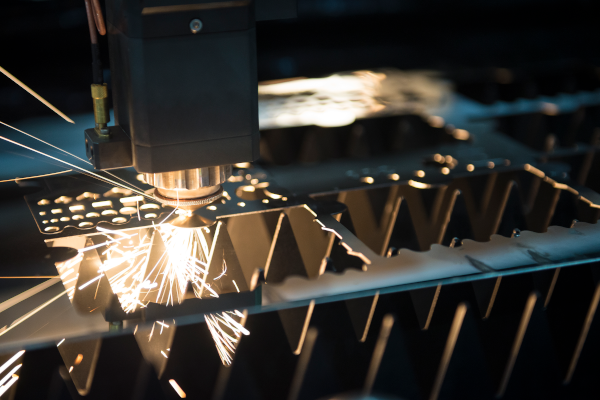
Vibratory Finishing is a generic name given to the process of improving the surface of metal using vibrational forces. This process is highly effective in removing burrs or edges (deburring) from metal components that appear after stamping or forming. removing sharp edges.
Vibratory finishing can also be used to clean and polish metal surfaces before the parts are coated or delivered to your customer.
What is a Burr or Edge?
A burr is a ‘leftover’ piece of material that protrudes from an edge of a metal component after machining (grinding, milling, stamping, turning, etc.)
Burrs are known to cause numerous problems for manufacturers: interfering with edge fitting in product assembly, jamming along the assembly line, increased wear on parts, improper seals where edges meet, and safety concerns for workers who handle the parts along the line.
Needless to say, burrs are a persistent thorn in the manufacturing industry’s side!
3 Common Types of Burrs (Edges)
Unfinished parts often come off the line with sharp edges, rough surfaces, and protruded metal burrs in corners and on edges. These burrs come in many shapes and sizes ‒ some even too small to see with the naked eye (and impossible to fix manually!) Whether large or small, burrs or sharp edges are a significant quality concern as they compromise the performance of the part or component.
The following are the most common types of burrs that can appear on a formed or machined metal parts:
- Roll-over burr: One of the most prominent types of burrs, a roll-over burr is an unwanted piece of material at the end of a cut. Roll-over burrs form when material is pushed out of the tool’s path instead of being sheared off. They are more likely to occur on pliable or ductile metals, like copper, especially when the cutting edge is dull.
- Poisson burr: Named for Poisson’s ratio, a Poisson burr occurs when metal bulges outward under the strain of the cutting or forming, creating a raised edge rather than a smooth cut. It often appears when turning or drilling a part or component.
- Tear burr: As the name implies, a tear burr is material that tears loose from the part or component. A dull blade or a die in need of repair is a common culprit of tear burrs, as the metal wraps around the dull corner and tears. Tear burrs most often occur in punching operations.
Vibratory Deburring: How it Works
First, the products are placed in a large vibratory bowl with a capacity of up to 100 cu. ft. The bowl is partially filled with media, which is the name given to particles in the vibratory chamber. The media may be comprised ceramic pre-formed shapes incorporating abrasive particles or polishing agents to improve the surface finishes of the metal components introduced into the media.
When in operation, the machine generates vibrational forces by rotating an off-balance device at between 1,500 to 3,000 RPM. The rotator is bolted to the vibratory bowl mounted on coil springs or rubber mounts.
The result of the motor and spring arrangement will activate the media mass causing it to rotate within the vibratory bowl. This movement creates a “scrubbing” action, enabling the media to attack the metal components, thereby removing metal and creating a deburring effect on sharp edges produced when the metal components were formed or machined.
While vibratory finishing is most often used to break an edge or to deburr, it can also be used to produce a burnished, almost polished finish. This is achieved by changing out the ceramic media for porcelain, stainless steel balls or organic media.
Depending on the application, cycle times can vary from just fifteen minutes to several hours. With proper preparation and media selection, the parts should emerge from the vibratory finishing process unscathed, save for the removal of burrs. In general, vibratory deburring is gentler on parts than barrel tumbling.
Latem Industries - Canada’s Mass Finishing Experts
From large and complex to small and delicate, Latem Industries offers a cost-effective solution to remove burrs or sharp edges from any component. To discover more about the many options we offer and to receive a no charge quotation, contact us online or by phone at 1-866-543-3334.

